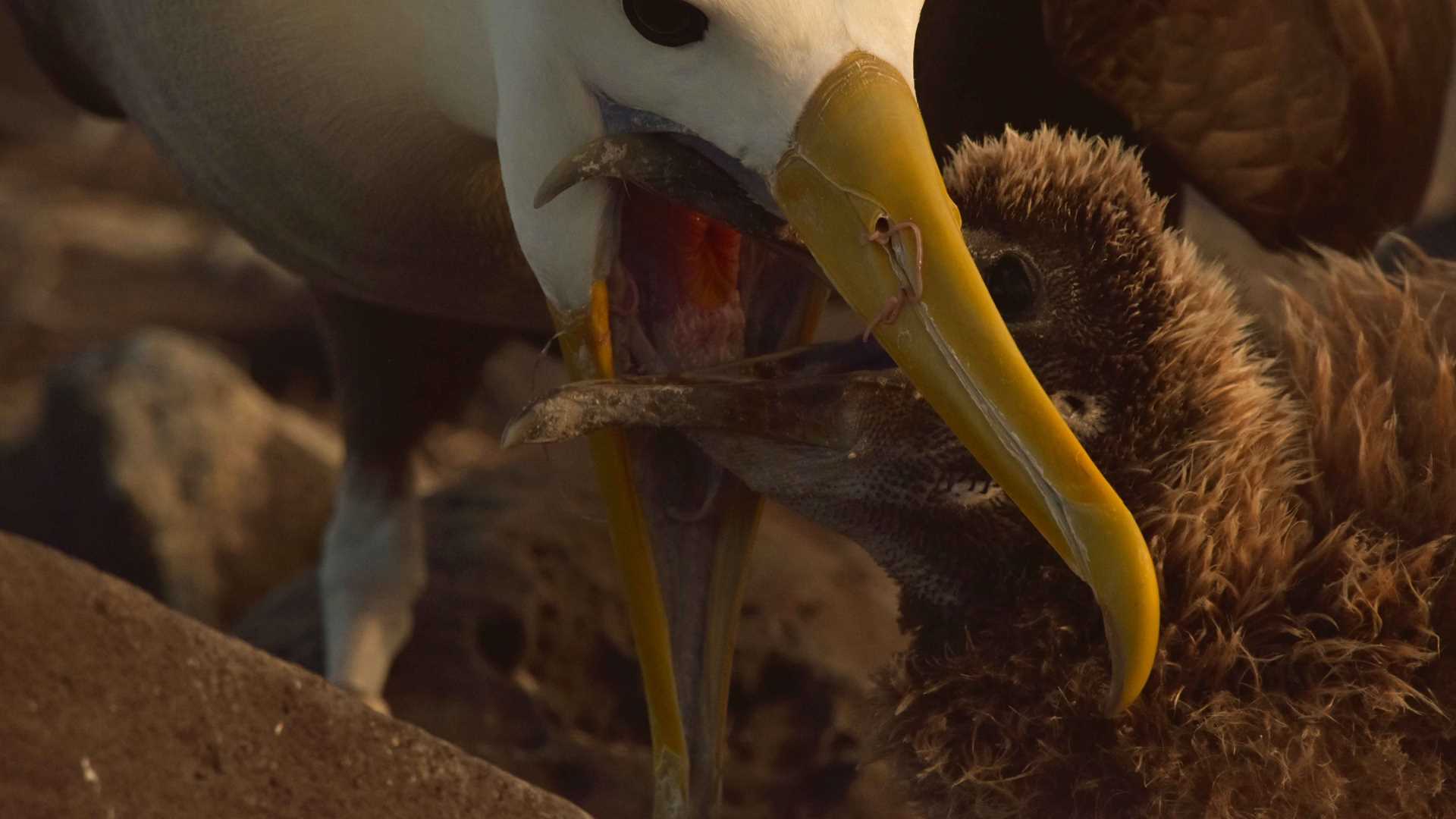It is the could-dry season at Galapagos, we were expecting today a chilly morning with some drizzle and cloudy sky, but… Not! Sun was shiny and sky was blue!
“Our early birds” went out to kayak along the coast of Garner Bay, one of the two visitor sites on Española Island, or its English name: Hood! They had fun exploring the intertidal zone, many lava rocks with plenty of wildlife such as iguanas, sally light-footed crabs, herons and many marine birds resting. After one hour they came back and all together had a nutritious breakfast. Then we delivered to them the snorkeling gear, wet suits and we were ready at 9:40 am to jump into the water. We went to snorkel along Gardner islet coast; as soon as we got there we started our exploration of the submarine world. The ocean in Galapagos at this time of the year is cold, yes! Cold at the equator, we might think, well! This is not good for us but, indeed! It is good for us, because cold water means more nutrients and plankton at sea, so that at the moment we got into the water it was astonishing! A group of about twenty juvenile sea lions were jumping and playing close the shoreline, we were very happy of finding such a great surprise, immediately we adjust to be in the water playing with them and enjoying this unique experience. Here in Galapagos the animals are so fearless, they are not afraid of humans, being it one of the highlights of your visit to this archipelago. Beside sea lions we saw rays, many varieties of multicolor fish such as parrots, hug fish, rainbows wrasses, and trumpet fish, among others. At the other side of Gardner Bay we have a beautiful beach, after snorkeling we headed there. We disembarked on a very white-soft sandy beach, it is so fine that when you walk there it feels like flour.
Along the coast there were many sea birds like pelicans and frigates, and many playful and sleepy sea lions. To seat close a colony of these aquatic mammals is a great experience. We observe how they interact among them and we learn of their ecology.
At noon we came back to our ship. Then our captain headed to the west side of the island, there we have one of the most famous visitor sites in Galapagos, Punta Suarez. It is a breathtaking place! Many unique-endemic animals can be found here: The Hood mockingbird, the biggest lava lizards, large cactus finches, marine iguanas, nazca boobies, blue footed boobies and the majestic waved albatross, which is an endemic seabird that nest and reproduce from April to December in this single spot at the south pacific.
All these creatures were seen along our walk exploring this magical place. Galapagos is not a zoo, we cannot predict what is going to appear, it is a natural park that at any moment any creature show up and surprise to any human that is exploring around, even naturalists guides that works and walk everyday along this trails. So my highlights were at the moment a female waved albatross started to feed its baby, it regurgitated a nutritious oil inside baby’s beak; suddenly a group a common dolphins passed swimming and jumping close to the coast, then a couple of waved albatross started their ritual or courtship to mate, which is a great show to see. Finally coming back to our boat the sunset was spectacular, orange and reddish sky. This day was amazing; it went from blue in the morning to orange in the afternoon. What a gift! What a unique opportunity to be her, enjoying one of the last pristine places in our planet. Cheers!







